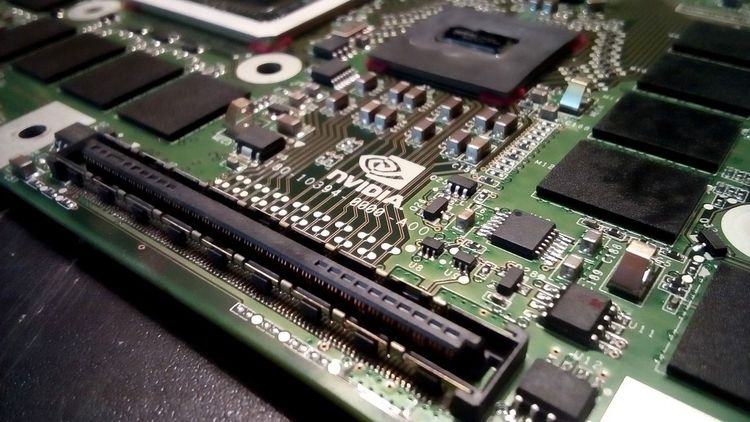Generative AI is a recurring theme in my newsletter, Actuator. Initially, I hesitated to delve deeper into the topic. After years of reporting on technology, I’ve seen numerous hype cycles come and go—many of them leaving disappointment in their wake. Yet, effective tech reporting requires a balance of skepticism and genuine excitement for future innovations.
This time around, generative AI seemed poised to emerge as interest in cryptocurrency waned. As the crypto landscape suffered, advancements like ChatGPT and DALL-E were ready to capture media attention, leading to a whirlwind of buzz, criticism, and various reactions reminiscent of the Kübler-Ross stages of tech hype.
For those familiar with my work, it's clear I’ve never been overly enthusiastic about crypto. However, the landscape for generative AI is different. There’s a broad consensus that artificial intelligence and machine learning will increasingly influence our daily lives.
Smartphones exemplify this shift. I regularly explore advances in computational photography, noting how manufacturers have successfully balanced hardware and software to enhance user experience while making these features accessible. Google, for example, has introduced innovative editing tools like Best Take and Magic Eraser, proving that practical utility enhances user engagement. The challenge going forward will be seamlessly integrating these features into the user experience so that individuals can enjoy the outcome without needing to understand the complex processes behind it. This approach mirrors Apple's successful strategy.
Generative AI offers an immediate "wow" factor, distinguishing it from previous tech hype cycles. Even the least tech-savvy individuals can type simple prompts into a computer and watch as it generates stunning artwork or engaging narratives. This intuitive accessibility is a significant reason for the rapid adoption of such technologies; often, cutting-edge innovations require users to envision potential uses far into the future, whereas generative AI enables immediate, tangible experiences.
The challenge, however, lies in managing expectations. Just as we often anthropomorphize robotics, it's easy to misinterpret AI's capabilities without a foundational understanding. The industry tends to lead with alluring headlines, hoping to capture attention before delving into the complexities behind them. Unfortunately, this strategy often results in prolonged efforts to bring perceptions back to reality.
One rewarding aspect of my role is engaging with experts who can clarify these concepts. My goal is to translate their insights for my readers—some interpretations resonate better than others, of course.
As I conversed with industry leaders about the role of generative AI in robotics, it became evident that most acknowledged its potential significance. For instance, in a recent discussion with Marc Raibert and Gill Pratt, the latter described how generative AI enhances robot learning: "We’ve developed techniques that utilize modern generative AI to enable human demonstrations of position and force, teaching robots from just a handful of examples without modifying the underlying code. We’ve collaborated with Columbia and MIT on diffusion policy, successfully teaching 60 different skills."
In another conversation with Nvidia’s VP Deepu Talla, I learned why he believes generative AI transcends being a mere trend. "You can see the productivity boosts already. It can draft emails for me—not perfect, but it’s a starting point that saves me time. The progress is evident, creating noticeable improvements from previous methods."
Meanwhile, Daniela Rus, head of MIT CSAIL, highlighted generative AI's role in designing robots. "Generative AI can significantly enhance motion planning, yielding quicker and more fluid solutions than traditional methods. This makes future robots appear less mechanical and more human-like. We’re also leveraging generative AI for design optimization by incorporating physics-based simulations to ensure the robots meet the necessary constraints."
Recently, a team at Northwestern University revealed research on AI-generated robot design, successfully creating a walking robot in mere seconds. While simplistic in appearance, this innovation could pave the way for developing more complex systems. "We discovered a rapid AI-driven design algorithm that bypasses the evolutionary process’s limitations," research lead Sam Kriegman explained. "We instructed the AI to design a land-walking robot, pressed a button, and it generated a unique blueprint almost instantly. I refer to this method as 'instant evolution.'"
Interestingly, the AI independently determined that legs are an effective mode of terrestrial movement despite us never specifying that requirement. "It rediscovered that legs are efficient for movement on land," Kriegman noted.
Jeff Linnell, founder and CEO of Formant, shared his perspective on the future impact of generative AI and robotics: "I believe generative AI, combined with physical automation, will fundamentally alter our existence. We recognize that AI is here to stay, and that it will reshape various careers and industries. The interface will evolve—soon, you’ll communicate with robots in natural language, and they’ll execute your requests without traditional programming."
Before founding Formant, Linnell led Bot & Dolly, renowned for its work on the film Gravity before its acquisition by Google in 2013. He emphasizes that the future focus will undoubtedly be on software, indicating Google shares a similar vision, especially with recent advancements in AI.
Ultimately, the intersection of generative AI and robotics promises to redefine our technology landscape, driving efficiencies and innovations we are only beginning to understand.







